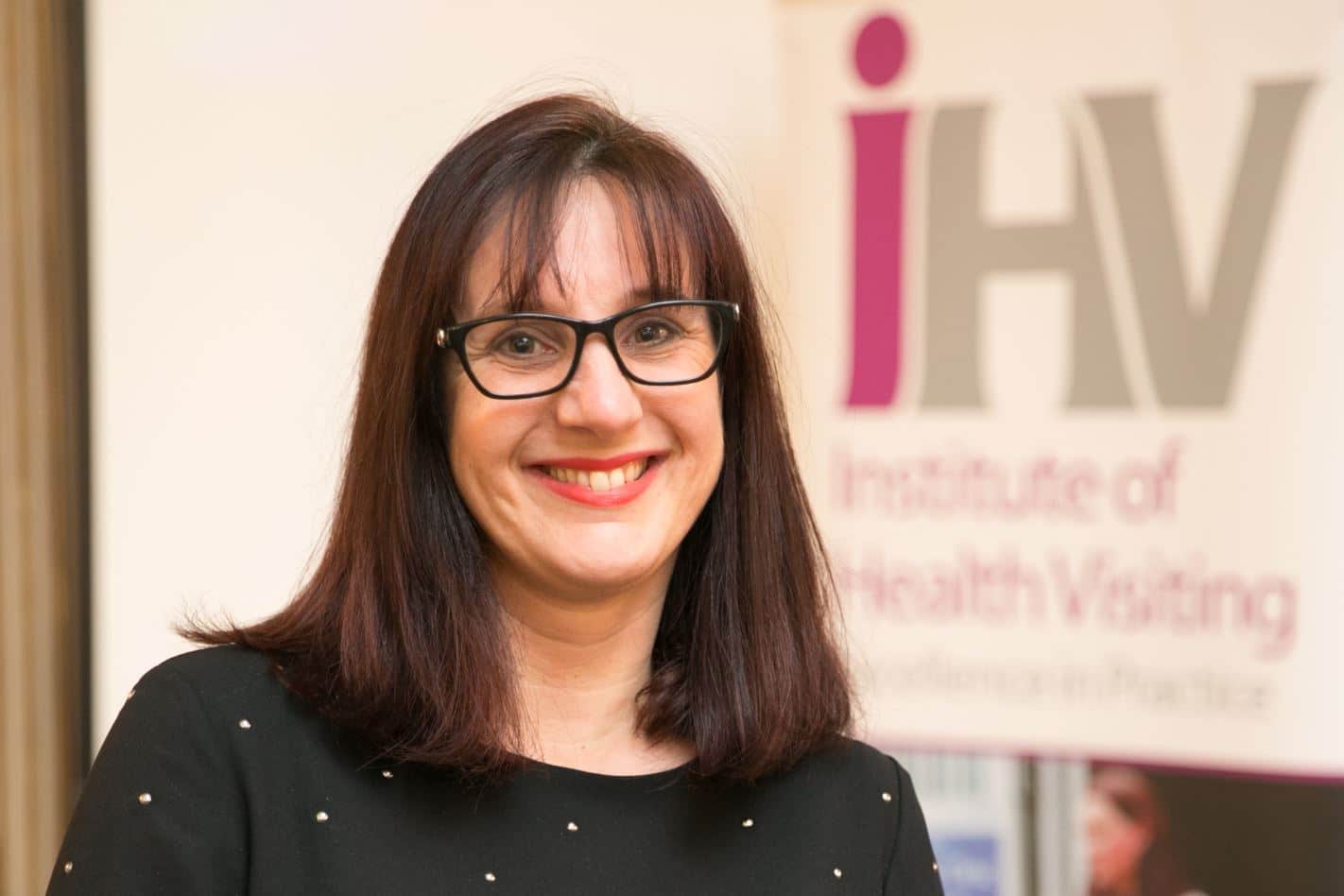9th October 2018
At the start of Baby Loss Awareness Week (#BLAW18), a blog by iHV’s Philippa Bishop on her work with the National Bereavement Care Pathway for pregnancy and baby loss project.

Philippa Bishop, Training Manager, iHV
In my last blog, “Working together for more children’s smiles”, I wrote about the additional responsibilities my colleagues and I carry out to represent the Institute and the health visiting profession on boards and national level meetings. For the past year, I have been really privileged to attend the Training Sub-Group and now the Core Group meetings for the National Bereavement Care Pathway for pregnancy and baby loss project, working alongside a passionate group of people from different organisations led by Marc Harder as Project Lead for Sands (Sands is the stillbirth and neonatal death charity).
The background to the project is that it was initiated with the support of the Department of Health and the All Party Parliamentary Group on Baby Loss. The project aims to ensure that all bereaved parents are offered equal, high quality, individualised, safe and sensitive care in any experience of pregnancy or baby loss – whether that be through miscarriage, termination of pregnancy for fetal anomaly, stillbirth, neonatal death, or sudden unexpected death in infancy (up to 12 months).
The five Bereavement Care Pathways provide individual pathway guidance developed to support these different causes of baby loss. There has also been a training pack developed to help organisations raise awareness amongst all their staff of the pathways in the pilot areas selected over the last year. We are entering the last phase of the project now and it is key that health visitors are aware of the pathways and flag them to their services to plan their implementation consistently across all areas in England. The Sudden and Unexpected Death in Infancy (up to 12 months) will be the most likely pathway to be implemented in practice by health visitors, but reviewing all of the pathways will offer a picture of what good should look like for any parent experiencing any other type of loss.
My own view is that this really is vital work for health visiting. It may not have a KPI attached to its delivery, but support to families following baby loss is a priority. Such work requires excellent practitioner resilience to ensure that they are well-equipped to provide responsive and containing support whilst looking after their own health. Baby loss at any stage is one of the most isolating experiences for parents. The sense of failure is overwhelming and all-pervading. With the health visiting service now mandated to deliver antenatal contacts, it is increasingly likely that practitioners will have developed a fledgling working relationship with a mother who goes on to experience a stillbirth or neonatal death. Despite the previous downward trend, Sudden Infant Death (SIDS) deaths rose again in 2016 with 219 babies dying1.
I really wanted to pick up this workstream because of my own experiences, both personal and professional. Some of the most valuable health visiting work I ever undertook was to offer care to families following stillbirth. As a Practice Educator working a mixed teaching / clinical role, I juggled duties to sit alongside the parents of a little boy who died during labour, and the mother of a little girl who died shortly after birth. These parents, who had longed to become parents, experienced the most profound losses through the unexpected and unexplained deaths of their firstborn children. The hour a week I spent with each of them for several months seems a luxury now, when considering the current capacity of the workforce and direction of delivery of the service across England. It was a luxury then too, as I covered a caseload of almost 1,000 children under 5yrs alongside a part-time colleague making our total capacity just about 1.0 whole time equivalent health visitors due to sickness in the team. There was no policy or standard or procedure for what were effectively bereavement listening visits, but I recognised that these parents needed to be offered a package of care and, when offered, they engaged. So, what did I do? Literally nothing – but be on time, be open, be ready to listen, and not too quick to respond. I modelled my approach on Solihull and looked for signs of reciprocity to guide the containment I offered. I was parent-centred and always remembered that nothing I could do would ever make things better for the parents. The nurse in me couldn’t fix them, but neither would my presence (provided I listened carefully) make it worse for them.
We talked about those precious infants, always using their names, reinforcing the memories of them and giving them a place in the world by acknowledging them over and over within the family home. We left gaps and long silences, spaces to feel the hurt and process the loss. Finding compassion was easy, finding the time less so. Being confident that I was getting it right took instinct, but knowing I had “done the right thing” was impossible in the absence of any guidance or pathways at the time. Both sets of parents went on to deliver healthy live infants within another two years and I felt fortunate to be in a position to visit them again. This also gave me some sense of whether the time spent with them previously had met their needs in a small way.
These new pathway documents will support the consistent implementation of good care by all those involved as they have been written for multi-agency implementation. The most important aspect is that they are written with a parent focus, with the aim of providing seamless, coordinated compassionate and full parent-centred care.
Please do make sure that you review the pathways and raise them within your organisation, and with your primary care, midwifery and any other colleagues who come into contact with parents who may be bereaved. As the statistics readily demonstrate, this will still be too many parents, making this a priority for our attention.







